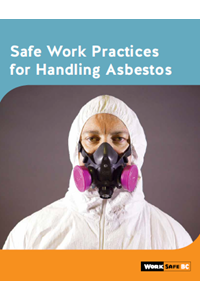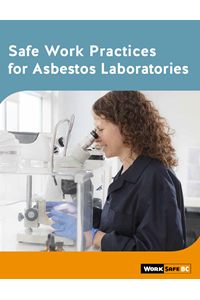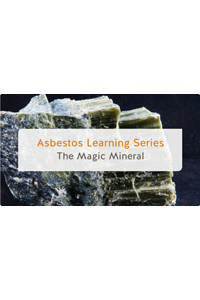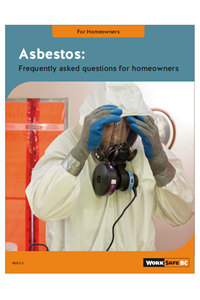Asbestos
Exposure to asbestos can cause serious long-term health issues and even death. Asbestos was widely used in B.C. as a building material until the early 1990s, and it can be present in many areas of older buildings. If you suspect asbestos is present, do not touch or move it. Only qualified professionals can remove asbestos.
Asbestos certification and licensing requirements now in effect
As of January 1, 2024, asbestos abatement contractors must be licensed to operate in British Columbia, and anyone performing asbestos abatement work in relation to buildings must be certified. Learn more about Asbestos training, certification & licensing.
- How workers are exposed
- The risks
- How to reduce the risks
- Resources
How workers are exposed
Anyone who repairs, renovates, or demolishes older buildings in B.C. is at risk of inhaling asbestos fibres. Found in dozens of items in older buildings, asbestos breaks down into small fibres as it ages or when it is disturbed. Touching or moving it releases the fibres into the air, where they can linger for hours.
Workers with the highest risk of breathing the fibres include:
- Demolition and renovation contractors
- Carpenters, plumbers, and electricians
- Building owners, home inspectors, insurance adjusters, and real estate agents
The risks
Breathing in asbestos fibres damages your lungs, causing serious health problems. These include:
- Asbestosis
- Lung cancer
- Mesothelioma (a cancer)
- Pleural thickening (a lung disease)
People exposed to asbestos won't develop illnesses right away. It takes years for your health to suffer. Research shows that smokers who inhale asbestos fibres greatly increase their risk of lung cancer.
Never assume a building material is free of asbestos. You can't tell just by looking at it. If you suspect asbestos is present, stop work immediately and have a qualified asbestos professional complete an asbestos survey.
If asbestos is found, the law requires employers to hire a qualified abatement contractor to remove it. A qualified person must also certify that the worksite air is safe, following the completion of the asbestos removal work. A notice of project must be submitted to WorkSafeBC for all asbestos work.
How to reduce the risks
To reduce the potential for injury or disease, you need to control the risks and hazards in your workplace.
The most effective way to manage the risk of exposure to asbestos is to eliminate the source of exposure. If that's not possible, there are other risk controls to use. When choosing risk controls, start by asking yourself the questions in the following steps, listed in order of effectiveness. See our resources for more information.
-
1
Elimination or substitution
Eliminating the asbestos hazard by substituting a safer material, where possible, is the most effective control. For example:
- Can you replace asbestos containing products such as brakes, clutches, or gaskets with non-asbestos substitutes?
-
2
Engineering controls
Making physical modifications to facilities, equipment, and processes can reduce exposure. Some questions to consider:
- Can asbestos containing materials be encapsulated or enclosed
- How can asbestos removal work areas be enclosed and the air filtered to prevent the escape of asbestos fibres?
- How will worker exposure to asbestos be monitored?
- How will asbestos waste be properly contained and disposed of?
-
3
Administrative controls
Changing work practices and work policies, awareness tools, and training can limit the risk of asbestos exposure. Some questions to consider:
- Have you developed a written exposure control plan for asbestos?
- How can warning signs be effectively posted to warn unprotected workers?
- Where can written safe work procedures be posted?
- How will you train workers regarding the hazards of asbestos and how to protect themselves?
-
4
Personal protective equipment
This is the least effective control. It must always be used in addition to at least one other control. Personal protective equipment must always be used when working with asbestos. Some questions to consider:
- Do workers have the required personal protective equipment, including respirators and protective clothing?
- Have respirators been checked and fit tested to make sure they will work properly?
Highlights
- New videos help explain the risks of asbestos exposure and what you can do to prevent it Published on: April 11, 2024
- Registry of licensed asbestos abatement contractors now online Published on: October 10, 2023
- Get your asbestos certification Published on: June 23, 2023
- New requirements to protect asbestos workers become mandatory January 1, 2024 Published on: June 09, 2023




